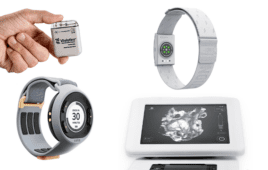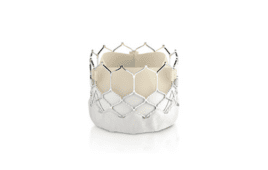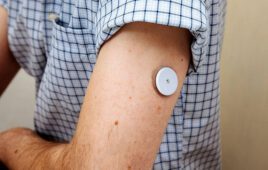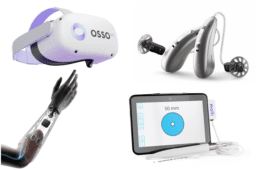
[Image from unsplash.com]
David Dykeman, Greenberg Traurig
The emergence of medical mobile device apps and wearables is revolutionizing healthcare. Home monitoring, big data, the Internet of things (IoT) and personalized medicine are putting mobile health (“mHealth”) apps at users’ fingertips. With connected health and point-of-care diagnostics becoming more common in clinical settings, patent protection is crucial for developers of mHealth innovations and wearables used to diagnose and monitor medical conditions, prescribe drugs, or order laboratory tests.
mHealth apps can be used on a large scale, such as the apps provided by the Centers for Disease Control to assist first responders during the recent Ebola outbreak. Other mHealth apps provide continuous blood glucose monitoring, nutrition analysis and personal fitness tracking to allow individuals to monitor their own health. Analysts estimate that there are approximately 259,000 health-related apps for mobile devices. Consulting firm PwC forecasts that mHealth apps will have been downloaded 1.7 billion times by the end of the year. In this rapidly growing market, medtech companies need to maintain a competitive edge through a strategic patent portfolio that focuses on protecting core technology, exploring new patent areas, and establishing worldwide patent protection.
(Network with Greenberg Traurig experts at DeviceTalks West, Dec. 11–12 in Orange County, Calif.)
Drive growth with strong patent strategy
A strategic patent portfolio protects a company’s core technology, which in turn helps secure funding and establishes a competitive advantage in the marketplace. A recent study found that a startup has about a 2.5 times greater chance of achieving success within 10 years of venture capital investment if it holds patents before the investment.
Patents are extremely important for companies of all sizes with innovations in mHealth. For early-stage companies, patents are often the only way for investors to place a value on its technology. In this way, patents make up a significantly greater portion of enterprise value for early-stage mHealth companies. As a company grows, patents become the currency that secures financing through venture capital or private equity investment. Patents can also lead to collaborations, joint ventures, and licenses with strategic partners.
For early-stage mHealth companies, the key is to develop a strategic patent portfolio that has comprehensive patent coverage around the company’s innovations. The core technology must have adequate patent protection to provide flexibility and room to operate in a desirable market. To obtain broad patent protection, companies should file an initial patent application covering the core technology, followed by additional patent applications covering key improvements. A company should consider both current and future business objectives and analyze ways that competitors may attempt to design around its patents.
Navigating the patent thicket
A major challenge for mHealth companies is the complex and often multifaceted nature of mobile technology. Many traditional medical device companies are now creating mobile apps for existing products. Such innovations frequently incorporate or combine multiple technologies, and each component of the device must be protected. Where applicable, patent claims should be directed to the entire device, key components, control systems, disposables, mobile applications, methods of treatment, manufacturing methods and any other aspects of the invention. Design patents can also provide protection for the ornamental features of mHealth products. As companies continue to improve their core technology, they should patent incremental changes to form a “picket fence” of patent protection around that core tech. By filing patent applications covering incremental improvements, mHealth companies can grow their patent portfolio and expand their presence in the market.
It’s important to work with a patent attorney who understands the interplay of programming, healthcare, detection and processing with hardware to ensure that the app qualifies as patentable subject matter. A patent attorney can also file copyright applications covering the software.
Protect IP ownership in developer agreements
Medtech companies that outsource the development of apps to third-party developers need to protect the ownership of their intellectual property (IP), including software code. When an mHealth company hires an independent contractor to create and develop code for an app, the company must have a written agreement stating that any code the independent contractor creates is a “work-for-hire” under copyright law. In a work-for-hire arrangement, that mHealth company will own any code developed by the contractor. Including this specific language in a written developer agreement allows the mHealth company to retain ownership of the copyrighted source code that runs the mobile app.
As a practical matter, mHealth companies should also be sure that third-party developers transfer website passwords upon completion of projects. Thus, a company can access and improve mobile apps and websites even if the developer is no longer involved.
From innovation to market
mHealth innovations present some unique concerns. FDA is issuing new guidance on how to best regulate medical mobile apps. To limit potential liability, mHealth apps should include a disclaimer that the app does not provide medical advice.
Medical mobile device apps and wearables are changing medicine at the forefront of healthcare innovation. With strategic patents that focus on key innovations, medtech companies can maintain a competitive edge in the burgeoning mHealth industry.
David Dykeman is a registered patent attorney with more than 20 years of experience in patent and intellectual property law and co-chair of Greenberg Traurig’s global Life Sciences & Medical Technology Group. He can be reached at dykemand@gtlaw.com or (617) 310-6009.




